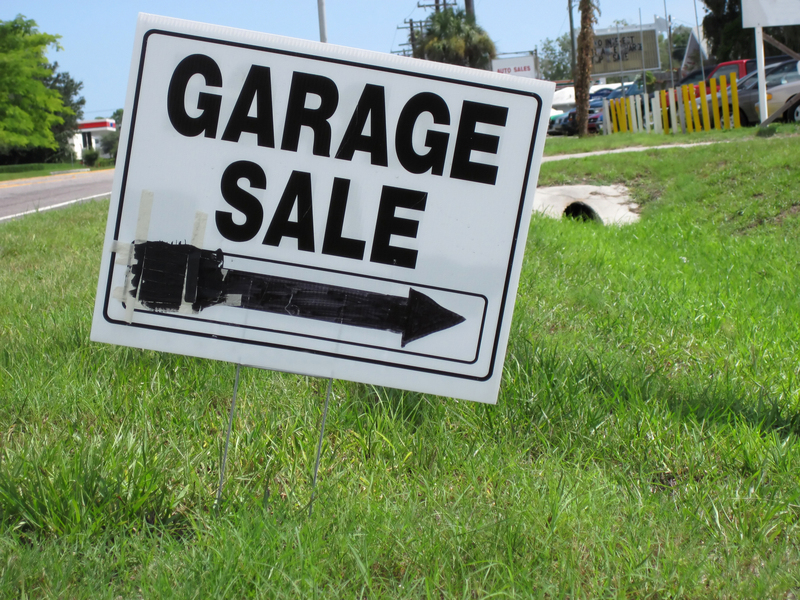The Effort to Cease Microplastic Pollution Grows
Microplastic contamination has rapidly become one of the most pressing global environmental crises of the 21st century. With the proliferation of plastic usage in almost every aspect of modern life, these tiny particles are now turning up everywhere--from the deepest ocean trenches to remote mountain peaks and even in the air we breathe. This extensive, invisible threat has galvanized scientists, policymakers, industries, and individuals to intensify efforts to eliminate microplastic pollution for the sake of planetary and human health.
In this comprehensive article, we delve into the expanding global effort to combat microplastic pollution, examining innovative solutions, recent policy advancements, scientific breakthroughs, and ways that everyone can contribute to reversing this alarming trend.

What Are Microplastics?
Microplastics are plastic fragments less than 5 millimeters in length. They are broadly classified into two categories:
- Primary microplastics: Purposefully manufactured small plastic particles, like microbeads found in cosmetics, personal care products, and industrial abrasives.
- Secondary microplastics: Result from the breakdown of larger plastic debris via exposure to sunlight, wind, and water.
These persistent particles infiltrate ecosystems, drinking water, and the food chain, posing significant risks to wildlife and human health. The ability of microplastics to attract toxic chemicals and enter living organisms has positioned them at the forefront of environmental concerns.
The Global Scale and Impact of Microplastic Pollution
It is estimated that over 11 million metric tons of plastic waste enter oceans each year, a significant portion of which becomes microplastics. These particles accumulate in:
- Oceans and freshwater bodies
- Soil and agricultural land
- Air (as atmospheric microplastic fibers)
- Seafood and even table salt
Notably, a 2022 study revealed that humans ingest approximately 5 grams of microplastics every week--about the weight of a credit card. These findings have invigorated the push to halt microplastic contamination worldwide.
Why Is Microplastic Pollution Such a Huge Concern?
1. Environmental Threats
Microplastics can:
- Harm aquatic life by causing blockages, physical injury, and toxic chemical exposure
- Impede plant growth and soil fertility
- Disrupt entire food webs and ecosystem balance
2. Human Health Impacts
Emerging research highlights that microplastics and their associated chemicals may contribute to:
- Hormonal disruptions
- Respiratory and digestive issues
- Potentially cancer and other chronic diseases
3. Socio-economic Effects
- Damage to fisheries and tourism-dependent economies
- Increased costs for water treatment and waste management
Collectively, these dangers have underscored the necessity to advance solutions for reducing and ultimately stopping microplastic pollution globally.
Main Sources and Drivers of Microplastic Pollution
Understanding the root causes is vital in ramping up the fight against microplastic contamination. Some key sources include:
- Textile fibers: Synthetic clothes (e.g., polyester) shed microfibers during washing.
- Tire wear: Tires release rubber and plastic particles on roads.
- Single-use plastics: Bags, bottles, wrappers, and other disposable items break down into microplastics.
- Personal care products: Microbeads in scrubs and toothpaste (though banned in many countries).
- Plastic pellet spills: Used in manufacturing, sometimes lost during transportation.
These insights guide ongoing strategies to fight microplastic pollution and lower plastic waste generation at the source.
Key Initiatives and Innovations Tackling Microplastic Pollution
1. International Policy and Regulation
-
United Nations Treaty on Plastic Pollution:
- Global talks are underway (since 2022) to formulate a binding agreement restricting plastic pollution at all stages--including microplastics.
-
National Bans and Restrictions:
- Certain countries, such as the UK, Canada, and the US, have banned microbeads in rinse-off cosmetics.
- The EU's Green Deal aims for total plastic reduction and tighter microplastic controls by 2030.
2. Scientific Research and Monitoring
-
Improved detection technology:
- New tools enable efficient identification of microplastics in environments, seafood, and even human blood.
-
Database development:
- Global microplastic databases aggregate data for policy and scientific advances.
3. Industrial Advances
-
Innovative filtration systems:
- Washing machines equipped with microfiber filters are increasingly common, capturing up to 90% of fibers before water discharge.
-
Sustainable textile production:
- Development of biodegradable fabrics and recycling technologies to reduce synthetic microfibers.
-
Eco-friendly tire designs:
- Manufacturers are researching alternatives to lessen tire microplastic release without compromising safety.
4. Community Projects and Advocacy
- Public awareness campaigns, such as Plastic Free July, mobilize millions globally to reduce plastic use.
- Nonprofit organizations and schools are cleaning up waterways and reducing local plastic pollution.
- Grassroots activist groups are lobbying for corporate responsibility and transparency around plastic usage.
5. Cleaning Technologies
- Marine skimmers and seaboosters: Devices that capture floating microplastics from rivers and ocean surfaces.
- Biodegradation innovation: Research into natural enzymes and bacteria capable of breaking down plastics.
How Individuals Can Help Stop Microplastic Pollution
While policymakers and industries have substantial roles to play, every person can take steps to reduce microplastic release:
- Choose natural fibers (like cotton or hemp) over synthetics when purchasing clothing.
- Launder clothes less frequently, use lower temperatures, and install a microfiber filter in washing machines.
- Minimize use of single-use plastics: Bring reusable bags, bottles, and containers everywhere.
- Support plastic-free personal care products--avoid those containing microbeads.
- Participate in local beach and river cleanups to prevent larger plastics from becoming microplastics.
- Advocate for stronger environmental policies and vote for leaders committed to curbing plastic pollution.
Collectively, these individual actions can magnify impact and build momentum toward a microplastic-free future.
Success Stories in Reducing Microplastic Contamination
Ban on Microbeads in Cosmetics
Countries banning microbeads have seen a significant decrease in primary microplastic concentrations in wastewater. The United States' Microbead-Free Waters Act (2015) has become a model, with other nations following suit.
Washing Machine Filters in France
France enacted a law in 2020 requiring all new washing machines sold after 2025 to contain microfiber filters. This bold step is expected to prevent thousands of tons of synthetic fibers from entering water systems annually.
Adidas and Parley's Recycled Ocean Plastic Shoes
Adidas partnered with Parley for the Oceans to create shoes made from recycled ocean plastics, repurposing millions of plastic bottles and demonstrating a scalable approach to reducing marine microplastic waste.
Ongoing Challenges in the Fight Against Microplastic Pollution
Despite significant progress, several challenges persist:
- Detection Difficulties: Many microplastics are too small for current filters and detection methods.
- Lack of Global Regulation: There remains no binding international treaty specifically targeting microplastics.
- Plastic Industry Resistance: Some global producers resist regulation and change due to costs and infrastructure dependencies.
- Waste Management Gaps: Developing nations often lack the necessary systems to prevent plastic mismanagement.
- Knowledge Gaps: Long-term health and environmental effects are still being studied, making risk management complex.
Nevertheless, momentum to cease microplastic contamination is stronger than ever. The combined support of governments, businesses, communities, and individuals worldwide is central to overcoming these hurdles.

The Future: Toward the End of Microplastic Pollution
The movement to cease microplastic pollution is gathering unprecedented pace. International cooperation, scientific discovery, corporate responsibility, and individual action are converging in powerful ways. Key future priorities include:
- Finalizing and enforcing a UN treaty on plastic pollution.
- Scaling up biodegradable material innovation.
- Improving global plastic waste collection and management systems.
- Ramping up research into health effects and environmental risks.
- Empowering communities with education and infrastructure to reduce plastic usage.
Ultimately, halting microplastic pollution will require relentless innovation and worldwide collaboration. The growing movement to stop microplastic pollution represents one of humanity's most important environmental endeavors of our time. If every sector acts, a cleaner, safer, and microplastic-free world is within our grasp.
Conclusion: The Path Forward in Ceasing Microplastic Contamination
The world's collective determination and ongoing projects highlight that it is not too late to stem the tide of microplastic contamination. Through science, policy, technology, and responsible lifestyle changes, we can successfully reduce, control, and eventually eliminate microplastic pollution. Together, we can ensure our planet's water, air, soil, and food are safe for generations to come--demonstrating that the effort to end microplastic pollution is not only growing, but ultimately, it is a cause we can win.